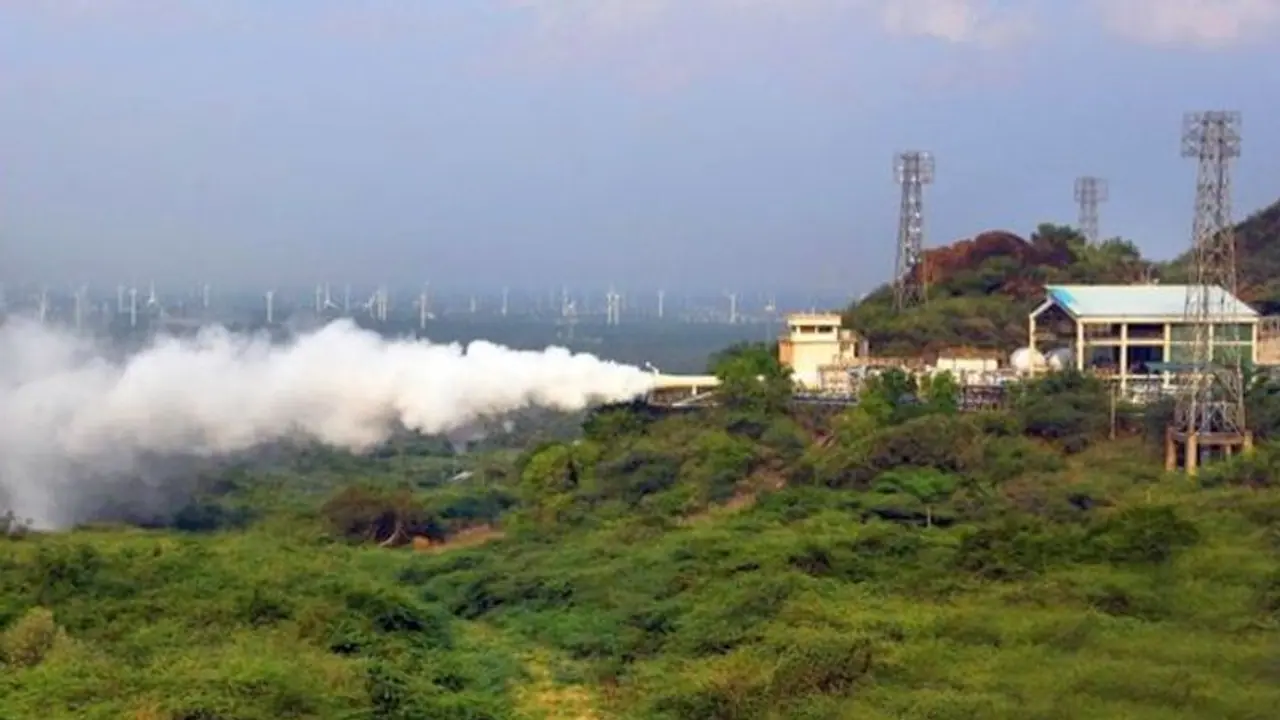Girish Linganna decodes ISRO's significant milestone in making its CE20 cryogenic engine safe for human spaceflight, particularly for the Gaganyaan missions.
The Indian Space Research Organisation has achieved a significant achievement in making its CE20 cryogenic engine safe for human spaceflight. This engine is used in the cryogenic stage of the LVM3 launch vehicle designed for Gaganyaan missions. The final set of tests on the ground to ensure its readiness was successfully completed on February 13, 2024. The last test, which was the seventh in a sequence of vacuum ignition tests, took place at the High Altitude Test Facility within the ISRO Propulsion Complex at Mahendragiri. These tests were conducted to mimic the conditions the engine would experience during flight.

The tests to make sure the CE20 engine is safe for people involved several types of checks. These included tests to show it could last a long time, and tests to see how well it worked under normal and unusual conditions related to its power, fuel mix, and pressure in the fuel tank. All these tests for the CE20 engine for the Gaganyaan mission have been finished successfully.
To meet the standards for human safety, four CE20 engines were tested in 39 hot firing tests under various conditions, running for a total of 8,810 seconds. This was done to surpass the basic requirement for human safety, which is 6,350 seconds.
ISRO has also finished the necessary tests for the flight engine set to be used in the first unmanned Gaganyaan mission (G1), planned for the second quarter of 2024. This engine, which will drive the upper stage of the LVM3 vehicle designed for carrying humans, can produce a force of 19 to 22 tonnes and has an efficiency rating of 442.5 seconds.
What is the CE-20 Engine?
ISRO's LVM3 rocket, a three-part heavy-lift launch system, features two solid side boosters that use solid fuel, a core stage booster with liquid fuel (burns a combination of liquid fuels), and a top cryogenic stage that operates on liquid hydrogen and liquid oxygen. It's engineered to deploy satellites weighing up to 4 tons into a high Earth orbit known as Geosynchronous Transfer Orbit, or GTO, and can transport up to 10 tons to a nearer orbit, Low Earth Orbit (LEO). This makes it twice as powerful as its earlier version, the GSLV Mk II, also known as the GSLV rocket.
The LVM3 operates with three types of engines: solid, liquid, and cryogenic. Solid-fuel boosters, known for their reliability, have been in use by ISRO for the longest period, which means they require less testing compared to the more complex liquid-fuel and cryogenic engines. The CE-20 Cryogenic engine, being relatively new with less than ten years in use, provides additional reasons for ISRO to conduct more tests on it.
This highlights a key difference: Solid-fuel rockets can only be used once. Like a candle, once they burn out, they must be thrown away. The engine tested is discarded after its test, necessitating the construction of a new one for the actual launch. While it's possible to recover and refurbish some parts, this isn't usually cost-effective, so new solid boosters are made for each launch.
On the other hand, liquid-fuel and cryogenic engines can be refurbished and flown multiple times. This means the same engine tested on the ground can be inspected, refilled, and used again. This concept is behind reusable rockets, which are capable of flying to space, returning to Earth, and being prepared for another mission.
The main goals of the flight acceptance test were to verify the hardware's condition, evaluate the performance of different subsystems, and adjust the engine settings to match the specific needs of the mission. The analysis of the test results showed that the engine systems worked as expected. This engine will now be installed in the C25 flight stage, which is currently being prepared for the LVM3 M3 vehicle.
With the test proving successful, ISRO can proceed with further improvements to the engine and fit it into the Cryogenic stage, which will then be mounted on the rocket. It's important to highlight the critical nature of this test.
What is Human-Rated Cryogenic Engine Testing?
Human-rating means evaluating a system's ability to safely carry humans.
ISRO has conducted several tests on the CE20 engine to ensure it's safe for human spaceflight. These tests included demonstrations of the engine's lifespan, durability tests, and assessments of how it performs under normal and unusual conditions, focusing on its power, fuel mix, and pressure in its fuel tank. All these tests needed for the CE20 engine to be approved for the Gaganyaan mission have been finished successfully.
